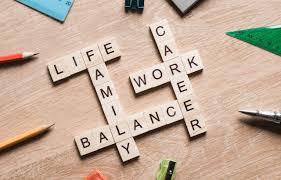The digital age has dramatically reshaped the way we perceive and manage work-life balance. With the rise of remote work and the ubiquity of smartphones, the line between personal and professional life has blurred more than ever. While this connectivity offers flexibility and opportunities, it also presents challenges in maintaining a healthy balance, affecting mental health and productivity.
Remote Work: The Double-Edged Sword
Remote work has become a permanent fixture in the professional landscape, accelerated by the COVID-19 pandemic. For many, it represents freedom from long commutes and rigid office hours, allowing individuals to integrate their work schedules with personal responsibilities. However, this flexibility often comes at a cost. A study by the Harvard Business Review found that remote workers tend to work longer hours and struggle to disconnect from their jobs, leading to increased stress and burnout.
The challenge lies in setting boundaries. Without a clear division between work and home, many employees find themselves answering emails late at night or feeling guilty for taking breaks during traditional work hours. This lack of separation can lead to a sense of being “always on,” where personal time and rest are continuously interrupted by work demands.
Constant Connectivity: A Blessing and a Curse
The digital age has made it easier than ever to stay connected. Tools like Slack, Zoom, and Microsoft Teams enable instant communication and collaboration, regardless of location. Yet, this constant connectivity has its downsides. Notifications, messages, and emails can create a sense of urgency, making it hard to focus and contribute to a phenomenon known as “communication overload.”
According to a survey by the American Psychological Association, 44% of workers reported feeling mentally exhausted at the end of the day due to the number of messages they received. The pressure to respond promptly, even outside of regular hours, can disrupt personal time and make it difficult to switch off from work mode.
Strategies for Maintaining Mental Health and Productivity
Maintaining a healthy work-life balance in the digital age requires intentional effort and strategy. Here are a few practical tips to help navigate this new landscape:
- Set Clear Boundaries: Establish specific working hours and communicate them to your colleagues. Use tools like “Do Not Disturb” mode on your devices to minimize interruptions during personal time.
- Create a Dedicated Workspace: If possible, set up a separate area for work to physically distinguish between professional and personal activities. This can help signal to your brain when it’s time to focus and when it’s time to relax.
- Prioritize Self-Care: Regular exercise, mindfulness practices, and sufficient sleep are crucial for mental well-being. Schedule these activities as non-negotiable parts of your day.
- Unplug Regularly: Take breaks from screens throughout the day and try digital detoxes during weekends or vacations to recharge and gain perspective.
- Practice Effective Communication: Clearly communicate your availability to colleagues and supervisors. Set expectations around response times to reduce the pressure of being constantly reachable.
Looking Ahead
As technology continues to evolve, so too will our understanding of work-life balance. By implementing thoughtful strategies and fostering a culture that respects personal time, individuals and organizations can adapt to the demands of the digital age while maintaining well-being and productivity.
